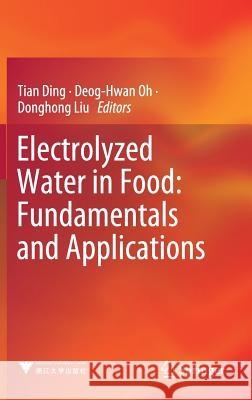Electrolyzed Water in Food: Fundamentals and Applications » książka
topmenu
Electrolyzed Water in Food: Fundamentals and Applications
ISBN-13: 9789811338069 / Angielski / Twarda / 2019 / 274 str.
Kategorie:
Kategorie BISAC:
Wydawca:
Springer
Język:
Angielski
ISBN-13:
9789811338069
Rok wydania:
2019
Wydanie:
2019
Ilość stron:
274
Waga:
0.59 kg
Wymiary:
23.5 x 15.5
Oprawa:
Twarda
Wolumenów:
01
Dodatkowe informacje:
Wydanie ilustrowane











